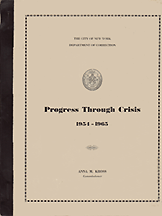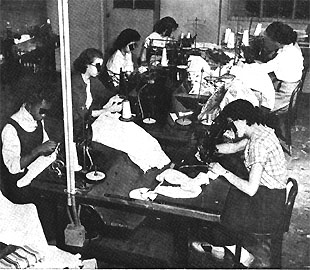Separation from home and community presents many problems for women prisoners in addition to those they share with their male counterparts.
Besides the necessity for personal adjustment to incarceration itself, women in detention often require help in planning for their children, arranging for the care of the home, and the like.
From the very beginning of this Administration, we have made consistent efforts first to allay to the extent possible the natural anxieties of our female inmates and then to
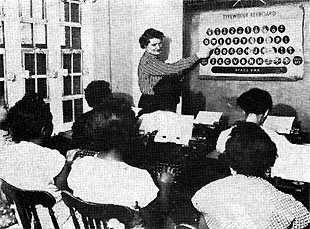
In 1955: The Friendly Visitors, Inc., a volunteer organization working at the House of Detention for Women, provides services for inmates not attainable within the budget. A typing class is conducted by a volunteer teacher. [From Page 116.]
|
supply as much of a program of beneficial activities as our limited staff and budget would allow.
Through the medium of interviews by our Social Service Staff, and with aid of the various volunteer organizations that began to function at
the House of Detention for Women in this Administration, we have been able to help with many of the social problems, though many others still remain beyond the power of our resources to alleviate.
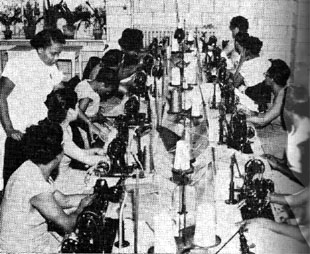
In 1955: It was reported, "Although limited in space and equipment, the girls receive practical instruction in the operation of power sewing machinery. [From Page 116.]
|
Although the good that may have been accomplished of necessity still seems very small in comparison with the tremendous need, we are all the more aware of the persistence with which our small Rehabilitation Division has introduced a variety of treatment programs, directing staff and volunteers alike toward the end that as many of our women prisoners as possible should be helped to live successfully on their return to their communities.
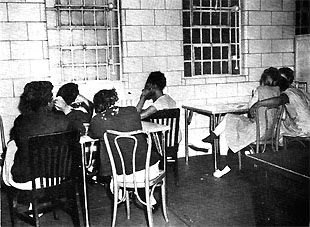
In 1954: At the House of Detention for Women, a typical recreation area offered tables and chairs but no other facilities or equipment to the female inmates. [From Page 117.]
|
The House of Detention for Women has never been designed to serve the dual role of housing detention and sentenced inmates and provide purposeful institutional program.
Costly maximum security cells, lack of adequate housing areas, lack of ad
equate program areas, and lack of adequate recreation areas have brought forth a continuous barrage of public and private agency criticism.
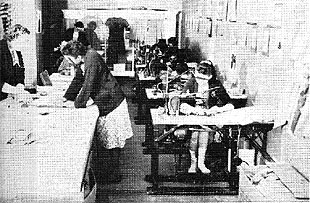
In 1955: The new Dressmaking Class, under the superision of an experienced instructor, gives the sentenced girls an excellent opportunity to learn to make civilian dresses to be used by them upon discharge. [From Page 117.]
|
The New York Correctional Association and the New York State Commission of Correction have made official complaints over the years.
Several positive steps were taken to ameliorate the situation until new correctional institutions for women could be built.
The superintendent's apartment was transformed into a library, academic school classes and added pantry and dining facilities.
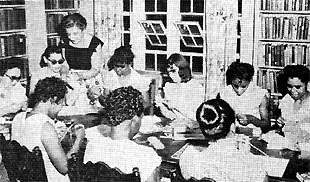
In 1957: The former Superintenden's residence at the House of Detention for Women became a schoolroom and inmate library. The books were provided through the donations and cash gifts of private citizens and the volunteer groups working with the female inmates at the institution.
[From Page 117.]
|
Vocational training classes were initiated wherever space could be found.
The roof area and a combination chapel-auditorium provide some recreational activities.
There is television on each housing floor and movies are shown on weekends.
